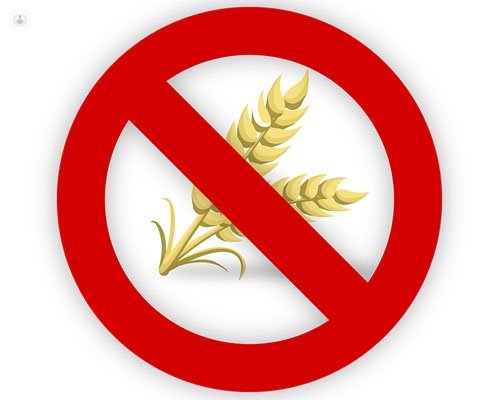Coping with celiac disease
Written by:Celiac disease is a condition that causes intolerance to gluten, a proprietary protein complex of some cereals.
Vs celiac disease wheat allergy
Should not be confused with celiac disease , wheat allergy, which can be overcome with time. Celiac disease, however, is a chronic intolerance. The treatment for celiac disease and wheat allergy is also different. In the case of allergy, simply remove the wheat from the patient's diet, whereas in the case of celiac disease, the patient will require eliminate from your diet all foods containing gluten, which are many more than those who simply contain wheat. This is due to the fact that gluten is present in other grains such as oats, barley or rye.
Gluten intolerance is a genetic disease that reacts inflaming the villi. These villi work for proper absorption of nutrients in the gut and a permanent swelling of the same supposed to degrade. This explains that the main symptom of celiac disease is diarrhea, because inflammation of the villi makes them unable to absorb nutrients properly and therefore are removed. This leads to other symptoms of the disease: malnutrition, weight loss and stunted growth and child development, tiredness and irritability, among others.

How to treat celiac disease
There is only one possible treatment for celiac disease, which does not have too much difficulty. It is the total elimination of gluten from the diet. Thus the villi regenerate gradually to normal, and avoid relapse into their inflammation and subsequent degradation.
But if it is true that the theory is not complicated, putting it into practice it requires a greater effort by the patient. Culturally is well established use of cereals in our diet, especially wheat, which is consumed in the form of biscuits, flour, breakfast cereals, cakes and a long list of products that carry gluten. In addition, a lot of wheat products are also used as additives in other foods, so that we can find gluten in products not imagine, like soluble coffee, cold cuts, sauces and even chewing gum.
It should also take into account the possible contamination during food handling, and is a product that does not contain gluten but has gone through the same worktable that one does have, or has been fried in the same oil of a food with flour, it can be harmful to celiacs.
What foods should consume a celiac and which are not?
Despite suffering from celiac disease should not neglect food, which has to be balanced and varied. To ensure the necessary nutrients we eat should be encouraging the consumption of fresh foods without gluten:
- Gluten-free grains: rice, corn, buckwheat, millet
- tubers
- Vegetables
- Vegetables and fruits
- Meat, fish and eggs
- Milk
- Oil
On the other hand, it is very important to always carefully read the labels of foods that are processed or packaged. They all product nutrition information. What interests us here is to find the identifying symbol which classifies the product as a food without gluten. To know what food is we have to look if a drawing of an ear of corn appears inside a circle and cross on the package by a stingray. Still, experts in Nutrition and Dietetics warn that there are products that contain traces of gluten hidden. Examples of food additives that may contain gluten are:
- modified starches: E 1400, E 1401, E 1402, E 1403, E 1404, E 1405, E 1410, E 1412, E 1414, E 1420, E 1422, E 1440, E 1442, E 1450, E 1451
- E 1200 Polydextrose
- E 306 Vitamin E (Tocopherol-rich extracts)
- E 621 Monosodium glutamate
Also, other possible sources of hidden gluten are:
- thickening
- stabilizers
- Cereal extract
- vegetable starch
- Germ of cereals
- vegetable protein
However, it is necessary to raise awareness that for a celiac, out for a drink or eat outside the home can end up being a problem. Few establishments often use foods that do not contain gluten, or note that should not handle food for coeliacs in the same place or the same instruments with which they have prepared any food. Therefore, it is advisable that people with celiac disease are well informed of the dishes before ordering anything and, if they are able, to warn in advance of their condition celiacs.


